Open Journal of Pediatrics and Child Health
The World Cannot say anymore that Children are not the face of COVID-19 The Urgency to Detect, Respond to MICS, and Care for children in 2021
Suresh Kishanrao*
Cite this as
K Suresh (2021) The World Cannot say anymore that Children are not the face of COVID-19 The Urgency to Detect, Respond to MICS, and Care for children in 2021. Open J Pediatr Child Health 6(1): 046-055. DOI: 10.17352/ojpch.000037Covid 19 pandemic has been showing disastrous effects across the world, since December 2019, affecting 220 countries, over 197 million cases and 4.2 million deaths by end July 2021, and huge economic loss, Political blame games and vaccine diplomacy and many social security measures. The pandemic also has exposed the limitation of Public Health capacities across the world.
By now we know that Children of all ages can be affected. The fact that exact data of number of children affected or their proportion of the total infections or deaths, is not readily available even at subnational levels, indicates that they have not been the face of the Pandemic. In the initial months the symptoms and signs of the disease were very mild in children, until in May 2020, when a few cases of critical illness called Multisystem inflammatory syndrome in children were first reported in UK/USA. Very few cases of mucor mycosis a fungal infection after recovering from Covid 19 are also being reported among children across the world. As of now available data indicates that children under the age of 18 years represent about 8.5% of reported cases and the symptomatic children are fewer and usually mild, and deaths were negligible compared to other age groups.
The complications of MICS and lack of vaccine are the two major hurdles in protecting the lives of the children as of now. The indirect impact is the Orphanhood due the death of millions of COVID-19-associated deaths of the parents, poverty due to diminished earning by the parents losing jobs or working for low wages, interruption in education due to closure of schools, increase in malnutrition in poor countries due to disruption of nutrition programs and mental health of the children for want of peer interactions and the tensions of online learning.
After about one and half year analysis of the available data indicates that the Covid 19 Pandemic affects the world’s children in three ways through: 1. infection with the virus and its complications like MICS and Mucor mycosis 2. the socioeconomic effects of the virus and related public health measures to suppress transmission and control the pandemic by the national and provincial Governments and 3. the risk that the virus and its response poses to the longer-term efforts to achieve the economic revival, efforts for Sustainable Development Goals (SDGs) and ensuring the realization of the rights of all children as committed by the national governments.
Working with UNICEF India, for over 17 years, the author in this article tries to look at the data available and assess the impact of covid 19 pandemic on the children in short and long terms.
Materials & methods: The author has reviewed the Covid 19 pandemic world dash boards, Periodical press and TV media reports, sub-national data of age and sex distribution of cases, small studies on the cases and deaths of Covid 19and it’s complications and reports on the various development partners on the issue of child related SDGs.
Introduction
First few cases of Severe Acute Respiratory Syndrome Coronavirus 2 (SARS-CoV-2/ Covid 19) Pandemics were reported from Wuhan, China, on 31 December 2019 has spread to over 220 countries and territories by now. The first 18-20 months of the COVID-19 response focused on preventing, detecting, and responding to infections, and on mitigating morbidity and mortality as more than 196,553,009 cases had caused more than 4,200,412 deaths by end July 2021 [1]. It has impoverished the entire world by its effects both on the health of the over 196 million (2.5%) of 7.91 billion who suffered and surviving population and untimely deaths of over 4.2 million individuals worldwide by end July 2021 [2-4]. The economic losses run into billions of US $ and recovery may take many years especially in developing world.
The fact that the exact data of children affected either in numbers or proportion is not readily available even at subnational levels indicates that they have not been the face of the Pandemic. By now we know that Children of all ages are affected if not by the disease per se but by the socio-economic impacts, by mitigation measures and by the untimely deaths of millions of parents succumbing to the disease. Some children suffered weeks after mild infection with Multisystem Inflammatory Syndrome (MICS) and very few had Mucor mycosis popularly known as black fungus a fungal infection maiming faces of many due to extraction of eyeballs, nose, jaws etc. For many others the effect will be lifelong though they did not exhibit any signs and symptoms or suffered mild illness due to loosing parents or impoverishing of the families. The aftereffects of the pandemics on children will be more damaging in the poorest countries, the poorest families, and on already disadvantaged people.
The Covid 19 Pandemic affects the children through 1. Infection with the virus and its complications like MICS and Mucor mycosis, 2. through the socioeconomic effects of the virus and related public health measures to suppress transmission and control the pandemic by the national and provincial Governments and 3. the risk that the virus and its response poses to the longer-term efforts to achieve the economic revival, efforts for Sustainable Development Goals and ensuring the realization of the rights of all children as committed by the national governments.
I discuss these three key issues to stress the need and the Urgency to Detect, Respond to MICS, and Care for children in 2021.
Covid 19 infection and its immediate and late complications
Global situation: As of now available data indicates that children under the age of 18 years represent about 8.5% of reported cases (7% -10%). The symptomatic children are fewer and usually mild, and deaths were negligible compared to other age groups in the initial months of the pandemic. A few cases of critical illness called Multisystem inflammatory syndrome in children (MIS-C) also called as ‘Paediatric Inflammatory Multisystem Syndrome (PIMS) was first reported in UK/USA in April 2020 [5]. MIS-C is triggered by the virus that causes COVID-19, therefore It can occur in children who have not had any common symptoms of COVID-19, such as fever, sore throat, or cough. “Most children with MIS-C will have antibodies to the SARS-CoV-2 virus, indicating their body has been infected previously. Pre-existing medical conditions like diabetes, immune suppression conditions are known as risk factor for severe disease and intensive care admission in children.
In USA indicates about 10.5% of a total of fourteen million (14070636) were cases in children up to 17 years and under fives contributed only about 1.8% of the cases Figure 1.
Children made up only a small proportion of coronavirus disease 2019 (COVID-19) cases, hospitalisations, or deaths [5]. Paediatric Multisystem Inflammatory Syndrome temporally associated with SARS-CoV-2 (PIMS-TS), first identified in April 2020, that shared the features of both Kawasaki Disease (KD) and Toxic Shock Syndrome (TSS). Several countries in Europe, the Americas and Asia have, since reported cases of a MICS. The symptoms and signs are like both Kawasaki Disease (KD) and Toxic Shock Syndrome (TSS) and are typically characterised by single- or multi-organ dysfunction, abdominal pain, vomiting and diarrhoea have also been reported. The first reports of MICS presentations with COVID-19 first emerged in April 2020 with 216 cases. The features of MICS, with differences in age, ethnicity, clinical presentation, and disease severity between the phenotypic groups was also described. Of those tested, 14.8% (39/264) children had a positive SARS-CoV-2 RT-PCR, and 63.6% (75/118) were positive for SARS-CoV-2 antibodies. In total 44·0% (118/268) required intensive care. Three of five children with cardiac arrest had TSS phenotype. Three children (1·1%) died. Only 2.1% of all laboratory-confirmed COVID-19 cases reported to the European Surveillance System (TESSy) were in the age group between 0 and 14 years of age [6]. The US has reported more than 4,000 such cases and 36 deaths from the disease so far. UK had reported that children contributed about 10% up to 26 July out of 5,745,526 positive cases 8,601 per 100,000 population and 129303 deaths [5] Figures 2,3.
Magnitude of the Infection and complication Problem in Indian children
While official sources report that India has seen 317 million cases and 424,000 deaths. Various national and States Health Missions reported proportion of child cases between 8- 11% and deaths -3-5% out of the total [3,7,8] cases. I estimate about 3.5 million cases and 21000 deaths among children. With the adults’ death rates of 302 per million population I also estimate that the country has added at least 400,000 additional orphans in the last 18 months.
Around 11 percent of the total Covid-19 cases in the country have been reported in persons aged less than 20, according to Minister of State for health [9]. A data shared by the ministry of Health and Family Welfare Government of India on 15 June 2021 recognises, that the first wave of Covid-19 was prevalent between July 1, 2020, and December 31, 2020, and the second wave was at its peak between March 15, 2021, and May 25, 2021, during both waves, the case distribution among the age groups looked mostly similar with minor differences. The data presented by the ministry showed that 3.28% Covid-19 cases in the first wave and 3.05% cases in the second wave were in children 1 to 10 years old. The mortality rates in this age group were 0.27% and 0.34% in first and second phases respectively. The 11 to 20 age group accounted for 8.03% and 8.57% cases during the first & second waves respectively. This age group had contributed for 0.53% and 0.31% deaths in first and second phase respectively [10]. An earlier data from official sources in February 2021 had indicated that 8.5% of total cases were children. A similar data till September 2020 had shown that the proportion if child cases and deaths were around 1.2% only 2020 Figure 4.
A age and sex-based analysis of epidemiological data of infected and deceased patients from various countries indicated that the number of infected people is least in the age group of 0-19 years among the three age groups in all the countries until early April 2020 and 20-49 years of age group was most affected in India. In India 5.9 cases and 0 deaths were in 0-9 years, as compared to 62.2% cases and 26.3% deaths in 20-49 age groups and 31.9% cases and 73.7% deaths were in 50 plus age group [11]. The authors attribute the reduced ACE-2 expression in the children’s nasal epithelium as responsible for reduced SARS-CoV-2 susceptibility among children [7].
Another analysis of data ending April 2021 had put the proportion of cases among 0-20 yrs. age group at 8.6% Figures 5,6.
Sero-prevalence of antibodies
A latest national serosurvey conducted between 20 June to 7 July 2021 conducted across 70 districts in 21 states among about 28975 people over the age of 6 years, indicated an overall positivity of 67.6% with desegregated figures of 69.2% among women as against 65.8% among men. The age wise positivity was between 57.2% lowest among 6–9-year-olds and 77.6% highest among 45–60-year-old persons. The urban population has roughly 3% higher antibodies. This is indicative that nearly one third of the population is susceptible. The seroprevalence of antibodies was 85.2% among 7252 health workers out of the population surveyed. The seroprevalence has jumped from 0.7% a year ago to 67.6%.
MICS- made us not to think Covid-19 is mild among children!
While in the first phase of Covid 19, administrators, and program mangers thought that Covid 19 was mild and negligible till February 2021. A new study suggests that Covid-19 may have turned severe and even deadly for thousands of children in India. Figures released by the Indian Academy of Paediatrics Intensive Care Chapter show that there were more than 2,000 cases of Multisystem Inflammatory Syndrome in Children (MIS-C) reported in the country by early 2021 [11,12]. MIS is a condition in which a patient develops fever and inflammation in multiple organs such as the heart, lungs, and brain. In more than 60 per cent cases, MIS affects the heart, with symptoms such as redness of eyes, rashes, low blood pressure, high-grade fever and stomach-ache or acute gastroenteritis and lower respiratory tract infection [11-13]. The condition is not life-threatening but has huge debilitating effects on children. It is the result of a reaction to an antigen made in the body to combat Covid-19 and the antibodies produced in the body of the children. These antibodies can cause allergies in their body. Government data on MICS is silent. With the onslaught of the second phase of the pandemic since April 2021 this number is expected to be over 5000 by now [13] Figure 7.
Mucor mycosis among children
The contribution of Children in Mucor mycosis cases is negligible. Rajasthan, in the last four months, has reported over 3,000 cases of mucormycosis and 167 deaths, of which only five cases were among children and one of them died within two days of hospitalisation. Similarly, four children with mucormycosis infection lost an eye in Mumbai. Most often these cases where Covid 19 antibodies were detected and not the confirmed disease.
Karnataka
As of 29th July 21, the home state of the author had reported around 3 million cases (29,48,700) cases and 36,491 deaths. The breakup of cases by gender is 54% & 33% whereas another 15% gender is not mentioned. Karnataka saw a peak of second phase of Covid 19 in March -May 2021. This data as of 29th July 2021 shows that the 3% of cases and fatality rate is less than 0.17 % among those in the 0-9 years and among 10–19-year age groups children contributed 7.5% of cases and 0.24 % of deaths (Figure 7). The age group of 20-49 contributed the most burden of 72.2% cases and 42.6% of deaths. 60-69 group C= 8.8% & D-4%, 70-79- C= 3.7% & D= 6%, 80-89 C= 1.2% & D=7.7 % , the 90 & above bracket -C= 0.15% & D=1.45%%. In the under-60 group, those aged between 50 and 59 have the worst fatality rate (2.1 per cent), followed by patients aged between 40 and 49 years (0.9 per cent). The number of centenarians who contracted Covid-19 in Karnataka has increased from 67 in mid-April to 212 (as of July 29). Of these, 61 tested positive in July, the highest for any month since the pandemic began Figures 8,9.
An analysis of first 112 860 cases in Karnataka had indicated that 73,797 (65.39%) cases were males and 39,063 (34.61%) females COVID-19 patients. While the lowest distribution by sex was in male (1.28%) and female (2.19%) patients were found among 0 to 4 years age category (Figure 8), the Highest infected male (37.21%) and female (37.99%) patients was within 18 to 35 years age category. The difference between gender among age categories was found to be statistically significant (p<0.001) [13].
Mucor mycosis case in karnataka
Two cases of Mucormycosis were reported in early June 21, first a 11-year-old girl from Bellary and a 14-year-old boy from Chitradurga district. Both were suffering from ‘acute juvenile diabetes’, which came to light when they were taken to a hospital following contracting the coronavirus disease. This is out of a total of 1,370 cases and 51 people have lost their lives in Karnataka [14] Figures 10.
Immediate socioeconomic effects of the virus and related public health measures to suppress transmission and control the pandemic
Pew Research estimates that in 2020 economy shrunk badly as 75 million people retreated into poverty accounting for 60% increase in poverty. The unemployment rate shot up by 23.5% due to stringent lockdowns. Urban poor and those living in crowded communities were more vulnerable to the virus and had to use their savings for treatment and subsistence, that increased inequalities. The morbidity will continue to eat into their earning & savings, though the better off protect themselves. Poor people working in unorganized sectors like restaurants, hospitality, tourism, street vendors, taxi & auto drivers lost their jobs or were hit earnings because of lockdowns. Large firms did take advantage of discounts in GST & low interest rate. Most business migrated from small to large firms.
Much bigger worry is due to sharpened inequalities that will continue even after the pandemic. For example, online schooling depended upon digital that created big divide in the population. It is estimated that only 30% of children were able to access online classes. Even among those who attended online classes the quality of learning was doubtful as for both teachers and students it was a new experience. This cohorts with learning disadvantages may be loose better opportunities of moving up the ladder. The immediate effect of Covid 19 Pandemic is in terms of interruption in regular schooling, increase in screen time effecting vision and social interactions and nutrition due to interruption of government funded supplementary feeding programs and the reduction in the earning of their parents. Essential maternal, newborn, child and adolescent health services across South Asia were shut down for over 18 months now. During last 18 months access to all essential Reproductive and child and adolescent services declined substantially.
With 40 million births and 45 million pregnancies in last 18 months, there were reports of pregnant women struggling to find the required support to give birth as health facilities continued to be overwhelmed treating Covid-19 patients. “During the interval between phase 1 and 2 even though some services where opened, use decreased for fear of getting infected, and the number of young children being treated for severe acute malnutrition (SAM) or immunized fell by over 80 per cent. India and Pakistan both saw reductions in the number of children receiving DPT3/Penta 3 vaccinations of around 35 and 65 per cent respectively [15]. “Children are facing mental health issues and are at greater risk of violence, as lockdowns shut them off from their vital support networks. UNICEF region of South Asia (ROSA) projected that 228,000 additional deaths among children under five years in the six largest South Asian countries compared to the previous year. Similarly, a rise in the number of maternal deaths of over 7,750 more in India and over 2,000 more in Pakistan additional maternal deaths are estimated across South Asia [15]. UNICEF ROSA estimates an increase in child marriages, 400,000 additional adolescent pregnancies, maternal and neonatal deaths rates and of child stunting [15]. During the second phase of the pandemic between April-June 2021, rates of maternal iron deficiency anaemia is estimated to be increased by over 40% in Nepal and 22% in Bangladesh when compared to the same period of 2019-20. Among adolescents, a rise in disease-related mortality is likely, with nearly 6,000 additional deaths from malaria, Tuberculosis (TB), HIV/AIDS and typhoid [15].
On the education front as schools across the country remain closed, and remote learning was disrupted in several states especially at sub-district levels, 420 million children in ROSA and 247 million children in Indian elementary and secondary education were away from these safe spaces, just when they need them most. In addition, many children do not have access to digital learning. Learning loss will therefore continue for children in India. A recent study commissioned by the National Commission for Protection of Child Rights (NCPCR) highlights that while 29.7% children feel that the pandemic has “very much” had a negative impact, 43.7% think it has had a “partial” negative impact on their education. Students across age groups think that their education has suffered due to the pandemic and somehow online learning has not been good enough. Study had covered 5,811 participants 3,491 school-going children, 1,534 parents and 786 teachers from 60 schools, across six cities, including some metros, and their adjoining areas selected from across regions in the country. The study also brings forth a concern and the need for proper oversight and stricter enforcement on social media as 37.8% and 24.3% of 10-yearold children surveyed had Facebook and Instagram accounts, respectively, in contravention to the guidelines laid down by various social networking platforms. Social media platforms contain and disperse a variety of content, that can be violent or vulgar content to instances of online abuse and bullying of children which is neither appropriate nor conducive for children [16,17].
The second phase surge is having dire consequences for children whose access to essential health, social, protection and education services is being constrained. Grief, fear, uncertainty, social isolation, increased screen time, and parental fatigue have negatively affected the mental health of children. Many studies have shown that the emotion regulation, rage control, rebellious behaviour, somatic complaints and integration and social competence are significantly affected among both 8-12 years and 13–18-year groups. In the adolescent groups issue of depression, anxiety and self-esteem get added. Friendships and family support are strong stabilizing forces for children, but the COVID-19 pandemic has disrupted them also It has become difficult for parents to calm their children’s anxieties because of the uncertainty and stress in their own lives. The occupational or emotional challenges parents face is interfering with their usual ability to address their children’s needs and worries [15,18].
The longer-term efforts to ensure the realization of the rights of all children
The real impact of the COVID-19 pandemic on children extends well beyond that of a viral infection. This crisis has public health implications that could have life-long consequences on children.
Long Covid 19 symptoms
A Paediatrician and his team, at the Gemelli University Hospital in Rome, interviewed 129 children aged 6–16 years, diagnosed with COVID-19 between March and November 2020 and reported that more than one-third had one or two lingering symptoms like Insomnia, fatigue, muscle pain and persistent cold-like complaints for four months or more after infection. Even children who’d had mild initial symptoms, or were asymptomatic, also showed long-lasting effects [19]. The UK Office for National Statistics’ latest report estimates that out of 500,000 UK children tested positive for covid-19 since March 2020, at least 12.9 % of UK children aged 2 to 11, and 14.5 % of children aged 12 to 16, had symptoms five weeks after their first infection [20]. The symptoms reported number up to include fatigue, muscle and joint pain, headache, insomnia, respiratory problems, and heart palpitations, gastrointestinal problems, nausea, dizziness, seizures, hallucinations, and testicular pain [18].
The biggest long-term disaster for children is the Orphanhood due the death of COVID-19-associated deaths. From March 1, 2020, to April 30, 2021, global minimum estimates put 11,34, 000 children having experienced the death of primary caregivers, including at least one parent or custodial grandparent. 15,62,000 children experienced the death of at least one primary or secondary caregiver. Countries in a global study set with primary caregiver death rates of at least one per 1000 children included Peru (10·2 per 1000 children), South Africa (5·1), Mexico (3·5), Brazil (2·4), Colombia (2·3), Iran (1·7), the USA (1·5), Argentina (1·1), and Russia (1·0). Numbers of children orphaned exceeded numbers of deaths among those aged 15–50 years. Between two and five times more children had deceased fathers than deceased mothers. Orphanhood and caregiver deaths are a hidden pandemic resulting from COVID-19-associated deaths [21]. The estimated Chid population under 15 years by regions, indicates it to be in total world - 26%, and by regions in Africa 41%, Latin America & Carrebean-24%, Asia 24%, Oceania 23%, North America 18%, and Europe 16% [22]. Orphanhood and caregiver deaths are a hidden pandemic result of COVID-19-associated deaths. Accelerating equitable vaccine delivery is key to prevention. Psychosocial and economic support can help families to nurture children bereft of caregivers and help to ensure that institutionalisation is avoided. These data show the need for an additional pillar of initialization of ‘Care for children’ to National and Provincial Government’s response: prevent, detect, and respond.
The children get affected by falling into poverty, increased learning crisis, threats to child survival and health and the risk of child safety. An estimated 42-66 million children could fall into extreme poverty adding to the estimated 386 million children already in extreme poverty in 2019 [15].
It is also estimated that 1.5 billion children are estimated additionally fall short of the development of their human capital, adding to one third of the world’s young people who were already digitally excluded. This will be affecting most the remote rural and urban poor children, either due to equipment like laptop or mobile phones or internet connectivity [15]. The nations launching or strengthening of the distance learning platforms and programs are not able to compensate this.
The number of children living in multidimensional poverty – without access to education, health, housing, nutrition, sanitation, or water is estimated to increase by 1.2 billion during 2020-2022, due to the economic hardship experienced by families because of the global economic downturn. The economic crisis generated by COVID-19 threatens to hit children and families the hardest while an additional 142 million children are expected to fall into monetary poverty by early 2021 alone [21].
Status of Covid 19 vaccination for children
Currently hypothesized explanations for an evidently less severe impact of COVID-19 on children globally includes the protective cross-immunity provided by other common childhood vaccines. There is a strong basis to hypothesize that immune response to the SARS-CoV-2 virus in children is different than in adults, resulting in differences in the levels of severity of symptoms and outcomes of the disease in different age groups [23]. Further investigations are desired on at least 3 childhood vaccines: BCG, MMR, and HEP-A for their potential protective role against the SARS-CoV-2 virus [23].
After the completion of a search of 13 articles published in 2020, and a narrative review imply that the potential relationship between childhood vaccination and COVID-19 based on the potential genomic and immunological protective effects of heterologous immunity, and / or based on observational associations of cross-immunity among vaccines and other prior endemic diseases.
Salman and Salem suggest that cross-immunogenicity of childhood vaccines for multiple viruses could potentially be a reason for the relatively milder infection and severity of COVID-19 among children. Most routine viral vaccines are either inactivated or killed viruses that stimulate T Helper 1 cells (CD4+) to secrete many different types of cytokines as interferon gamma, interleukin-2 (IL-2), and IL-12, improving the cytotoxicity of natural killer cells to recognize and destroy cells infected with new cross-reactive viruses. For example, warts that are caused by Human Papilloma Virus (HPV) could be ameliorated using intralesional MMR vaccine [24].
In many countries, children are routinely vaccinated against several bacterial and viral diseases. Vaccines may have non-specific physiologic effects when they alter the immune response to unrelated organisms, called heterologous immunity. The non-specific effects of vaccines are usually more pronounced in girls and appear to be maximal in the first 6 months of life when passed maternal immunity is further supplemented by newly introduced vaccines, starting at 2 months. There are several theories as to why heterologous immunity may occur [25].
Neutralizing antibodies produced against the foregoing vaccine-preventable microbes might cross-react with the antigenic epitopes of the spike (S) and nucleocapsid (N) proteins and prevent COVID-19 in children [26].
An investigation of the above hypothesis, using the BLAST search tool, showed no significant sequence similarity between these proteins and those in the childhood vaccine-preventable microbes, inferring that memory T-cells, rather than vaccine neutralizing antibodies, may be involved in the protection of children against COVID-19 owing to them having a larger number of naive T-cells that can be programmed to protect them against the disease [27].
Potentially, the low immunity in children that doesn’t exaggerate the immune response against the virus as in the case of adults, could explain the lesser severity of SARS-CoV-2 in this age group. Children have less adults-like memory cells specific to other circulating coronaviruses and therefore, are less capable to mount a devastating and vigorous cell-mediated attack on alveoli and interstitial tissue of the lung upon new infection [28].
The low immunity in children that doesn’t exaggerate the immune response against the virus as in the case of adults, could explain the lesser severity of SARS-CoV-2 in this age group. Children have less adults-like memory cells specific to other circulating coronaviruses and therefore, are less capable to mount a devastating and vigorous cell-mediated attack on alveoli and interstitial tissue of the lung upon new infection [29].
1st vax for kids
ZyCoV-D gets nod for use on all above 12, World’s First DNA-Based Jab Made in India.
Zydus Cedilla’s India-developed anti-Covid jab ZyCoV-D secured regulatory approval on Friday 20 August 2021 for emergency use, becoming the world’s first DNA-based vaccine for the novel coronavirus that will be administered to children above 12 years and adults. This is the sixth shot to receive approval in India. The delivery of vaccines is likely to begin by September 21 end, the company has indicated a supply of around five crore doses by December 21.
Recently GOI, had informed the Delhi High Court that clinical trials of COVID-19 vaccines for children under 18 years of age were to get completed soon. AIIMS, Delhi is one of the trial centres for the vaccine for those below 18 years. As per sources, the results of clinical trials are expected to come in one month after the completion of trials of all age groups. The trial is conducted in three phases by segregating children into categories according to their age. The first trial was started in the age group of 12-18 years followed by the age group of 6-12 years and 2-6 years which are currently undergoing trials. The second dose of Covaxin has already been administered to children in the age group of 6-12 years. As part of its COVID-19 vaccination trials for children, Bharat Biotech is likely to administer the second dose of Covaxin to children aged between 2- and 6-years next week, to children who have already received the first dose of the vaccine.
Conclusion, future of children
Children are amongst the least at-risk population for Covid-19 severe disease. it is becoming increasingly apparent that many children with symptomatic and asymptomatic covid-19 are experiencing long-term effects, many months after the initial infection.
While keeping an eye on MICS in children, an overzealous attempt to protect the health of our children, may end up depriving them from the quality and holistic learning.
Children, although less directly affected by the virus, are paying a heavy price through the indirect effects of the crisis, including poor diet, mental health impact, social isolation, addiction to screens and lack of schooling and health care, particularly among vulnerable groups
The pandemic has exposed the vulnerability of global food systems with a proportionate impact on the health and nutrition of vulnerable families particularly children and a deterioration in diet quality.
Many children in developing countries do not have access to digital learning. Learning loss will therefore continue for children in India and other countries. The second phase surge has increased screen time for children at the cost of sports and peer interactions and is having dire consequences on children whose access to essential health, social, protection & education is being constrained.
Neither there is any vaccine readily available, nor vaccination of children should unduly influence by any perceived urgency or external narrative. Encouraging news is that Zydus Cedilla’s India- anti-Covid jab ZyCoV-D secured regulatory approval on Friday 20 August 2021 for emergency use. Pfizer, Moderna, Covishield and Covaxin have started their clinical trials in phased manner for children between 12-18, 6- 12, and 2-6-years old children and even younger 2 years to six months old.
War forwards
• Almost half of children who contract covid-19 may have lasting symptoms, which should factor into decisions on reopening schools. Based on localized rates of disease transmission the safe reopening of schools should be a top priority, ensuring that the risk of COVID-19 exposure and transmission is minimized. Standard precautionary steps of limits on class size, alternating school days, a ban on assemblies and other group events, together with on arrival temperature checks, and use of face masks and hand hygiene be made mandatory.
• Prioritize the continuity of child-centred services, with a particular focus on equity of access particularly in relation to nutrition programmes, immunization and other maternal and new-born care, and community-based child protection programmes. Ensure sustainable food systems for an affordable and nutritionally adequate diet for all levels of society.
• Psychosocial and economic support can help families to nurture children bereft of caregivers and help to ensure that institutionalisation is avoided. These data show the need for an additional pillar of our response: prevent, detect, respond, and care for children.Rebalance the combination of interventions to minimize the impact of standard physical distancing and lockdown strategies on children in low-income countries and communities and expand social protection programmes to reach the most vulnerable children.
• Provide practical support to parents and caregivers, including how to talk about the pandemic with children, how to manage their own mental health and the mental health of their children, and tools to help support their children’s learning.
• There is also the need for financial support for poor families through providing work, increased daily wages and where that cannot be assured cash transfers.
- Covid 19 Live updates. https://bit.ly/3zjwJGc
- WHO Corona (Covid 19) Dashboard. https://bit.ly/3gr8I8H
- COVID-19 Data Repository by the Center for Systems Science and Engineering (CSSE) at Johns Hopkins University. https://bit.ly/387CGtD
- Covid 19 world dashboard live as of 25 July 2021. https://bit.ly/3gshh2N
- Paediatric multisystem inflammatory syndrome associated with SARS-CoV-2 (PIMS-TS): United Kingdom, & Ireland 2020,
- The European Surveillance System (TESSy). Link: https://bit.ly/3gsKw5I
- Jakhmola S, Baral B, Jha HC (2021) A comparative analysis of COVID-19 outbreak on age groups and both the sexes of population from India and other countries. J Infect Dev Ctries 15: 333-341. Link: https://bit.ly/2Wlm7YI
- Anna Christina Sick-Samuels. Link: https://bit.ly/3sGbKL3
- 11% of total Covid-19 cases reported in persons aged below 20: H&FW Dept GOI 23 July21.
- Less-than-12%-covid-19-cases-in- below-20-years age-in-first-&-second waves-MOH&FW, NHM, GOI New Delhi. Link: https://bit.ly/2UNcHVu
- Sharma M (2021) Think Covid-19 is mild among children? Study finds coronavirus turned severe for thousands in India.
- Biswas S (2021) Covid-19: A coronavirus-linked threat to children in India.
- Covid 19 in Karnataka, NHM, Dept of H&FW Bengaluru.
- Karnataka sees over 800 MICS cases and Bengaluru more than 400, Mrinalini Bhat TOI 25 July2021.
- The effects of COVID-19 on children, adolescents, and mothers in South Asia.
- Pizarro-Ruiz JP, Ordóñez-Camblor N (2021) Effects of Covid-19 confinement on the mental health of children and adolescents in Spain. Scientific Reports 11: 11713. Link: https://go.nature.com/3BbybuJ
- 8% of 10-yr-olds on FB, 24% on Instagram, Ambika Pandit, The Times of India - Bangalore eEdition 25/07/21
- Lewis D (2021) Long COVID and kids: scientists race to find answers. Nature 595: 482-483. Link: https://bit.ly/3864YVx
- Thomson H (2021) Children with long covid. New Sci 249: 10-11. Link: https://bit.ly/3Db4ICQ
- Hillis SD, Unwin HJT, Chen Y, Cluver L, Sherr L, et al. (2021) Global minimum estimates of children affected by COVID-19-associated orphanhood and deaths of caregivers: a modelling study. Lancet 398: 391-402. Link: https://bit.ly/2Wo8p7u
- The longer-term efforts to ensure the realization of the rights of all children.
- The world-population-by-age-and-region. Link: https://bit.ly/3zcZ1SH
- Beric-Stojsic B, Kalabalik-Hoganson J, Rizzolo D, Roy S (2020) Childhood Immunization and COVID-19: An Early Narrative Review. Front Public Health. Link: https://bit.ly/386VXvh
- Salman S, Salem M (2020) Routine childhood immunization may protect against COVID-19. Med Hypotheses 140: 109689. Link: https://bit.ly/385nkG4
- Shann F (2010) The non-specific effects of vaccines. Arch Dis Child 95: 662-667. Link: https://bit.ly/3gsDiyG
- Sabir DK, Sidiq KR, Ali SM (2020) Current speculations on the low incidence rate of the COVID-19 among children. Int J School Health 7: 61-62. https://bit.ly/3kgUR5L
- Ahmadpoor PL, Rostaing L (2020) Why the immune system fails to mount an adaptive immune response to a COVID-19 infection. Transpl Int 33: 824-825. Link: https://bit.ly/3kl580Y
- Abdulamir AS, Hafidh RR (2020) The possible immunological pathways for the variable immunopathogenesis of covid-−19 infections among healthy adults, elderly, and children. Electron J Gen Med 17: em202. Link: https://bit.ly/3grjk7r
- Abdulamir AS, Hafidh RR (2020) The possible immunological pathways for the variable immunopathogenesis of covid-−19 infections among healthy adults, elderly, and children. Electron J Gen Med 17: em202. Link: https://bit.ly/3grjk7r
Article Alerts
Subscribe to our articles alerts and stay tuned.
 This work is licensed under a Creative Commons Attribution 4.0 International License.
This work is licensed under a Creative Commons Attribution 4.0 International License.
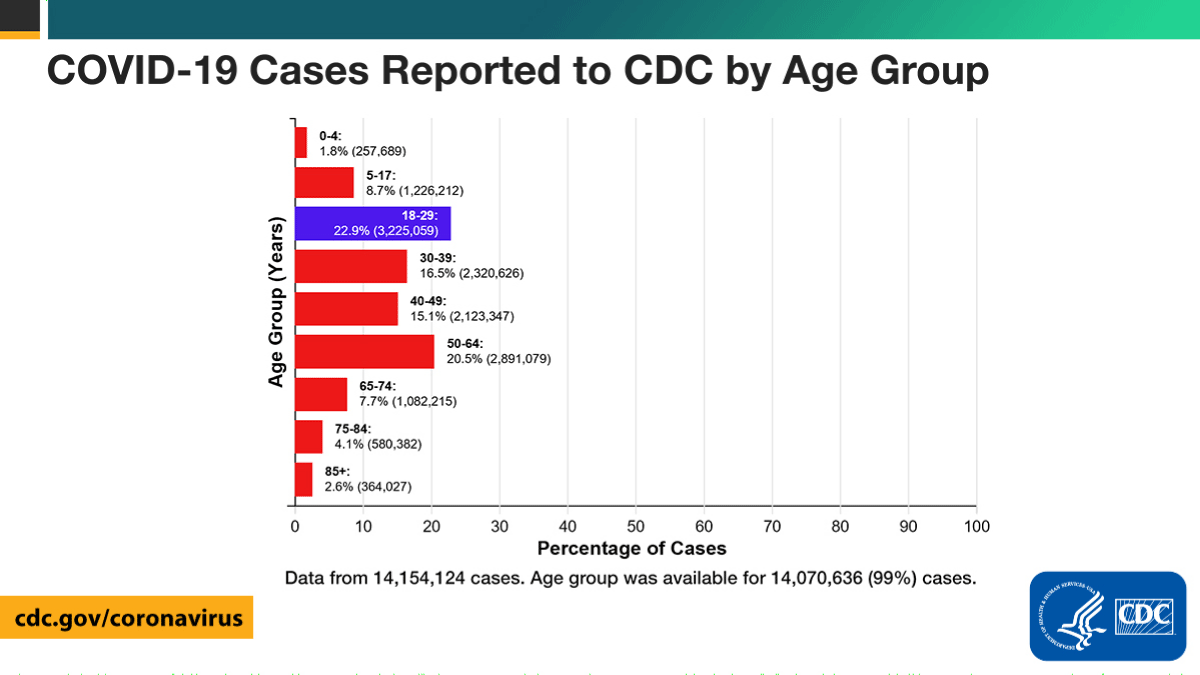
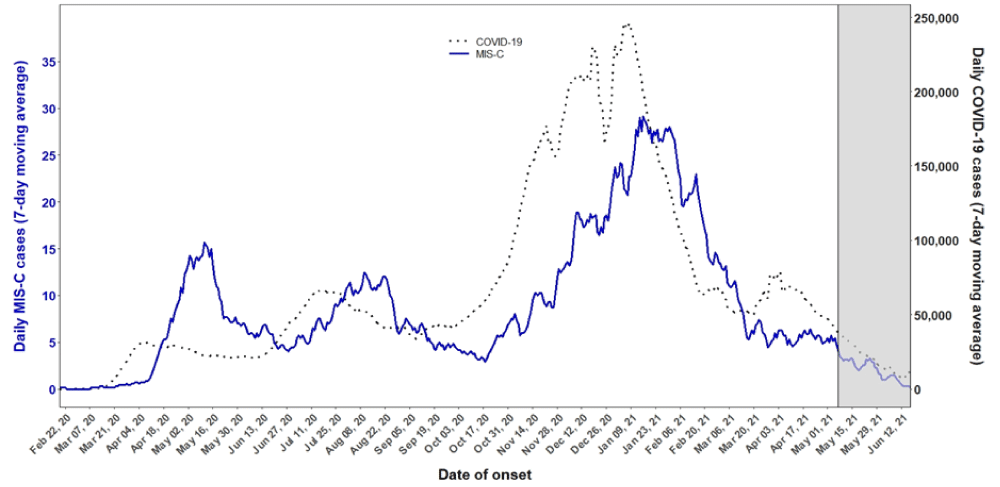

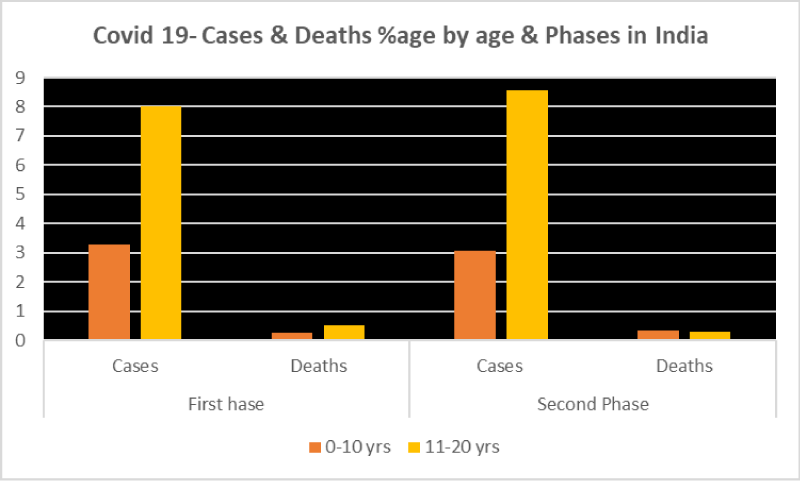
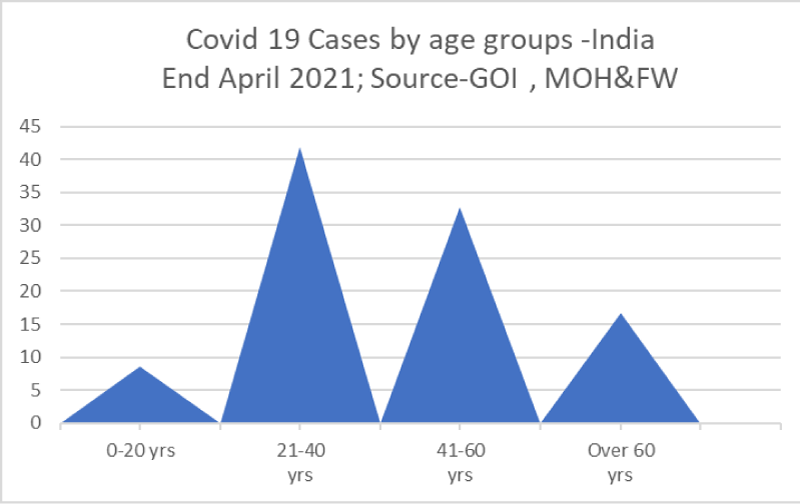
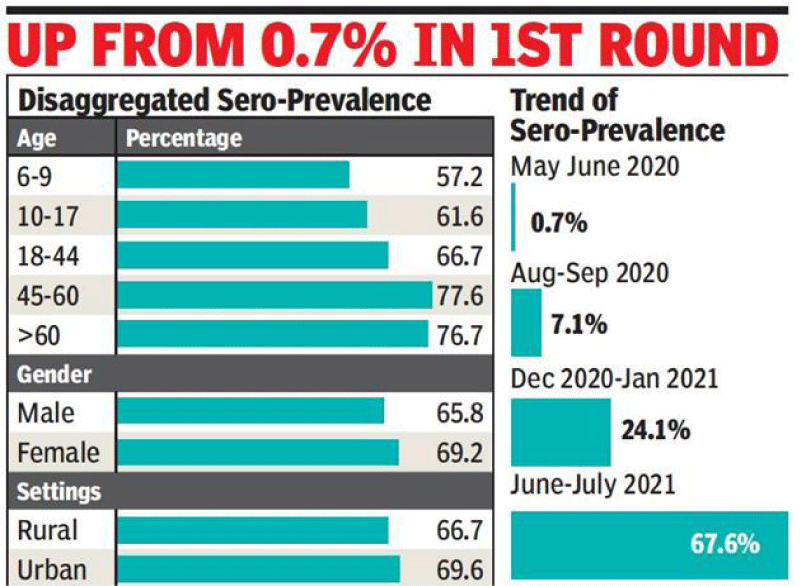
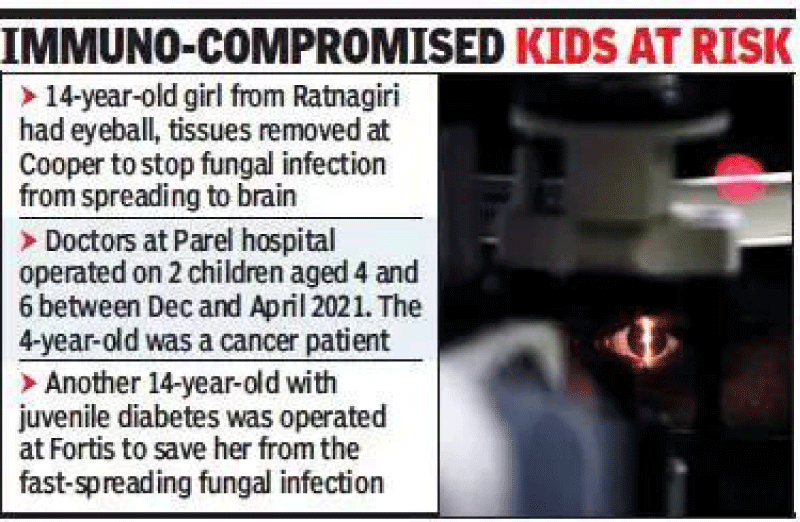
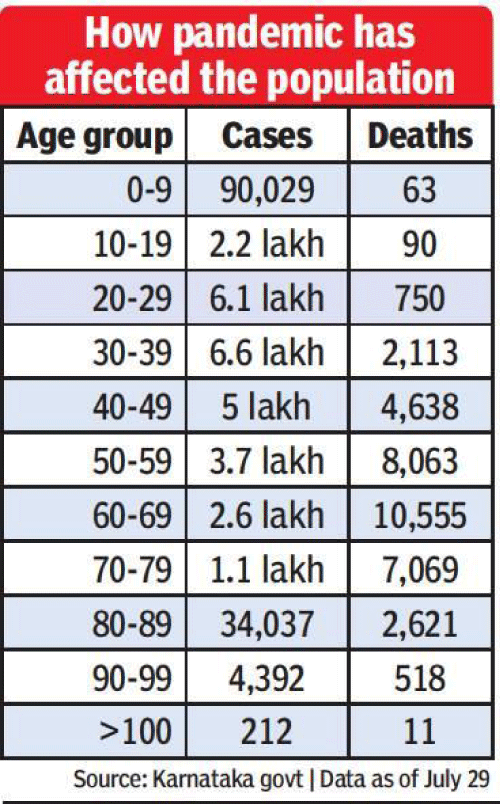
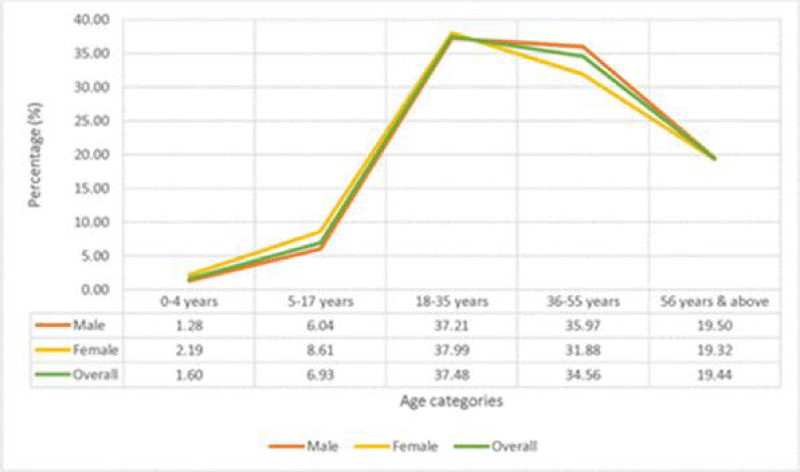
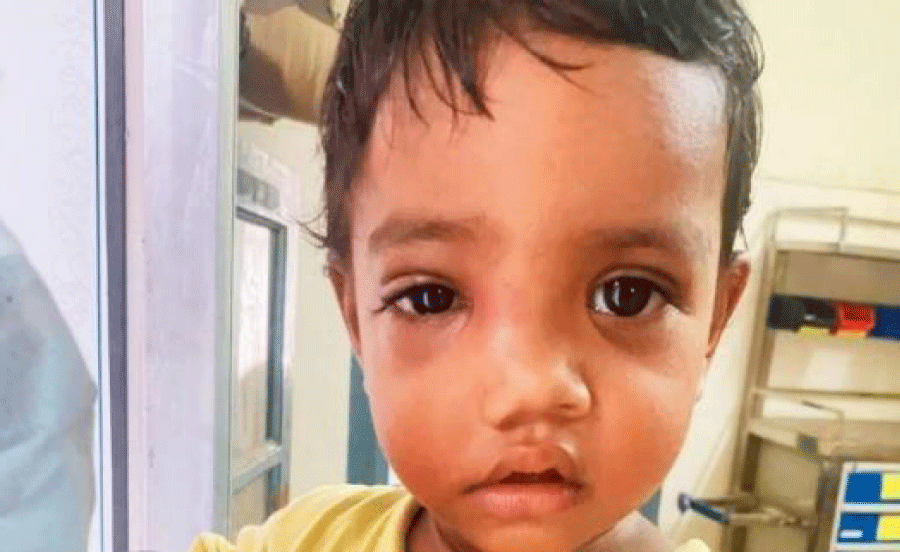
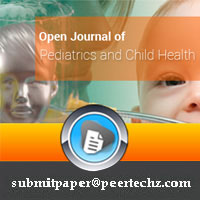
 Save to Mendeley
Save to Mendeley
